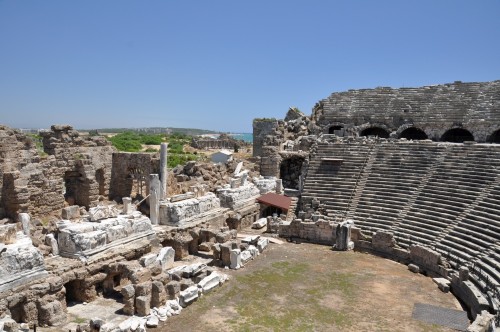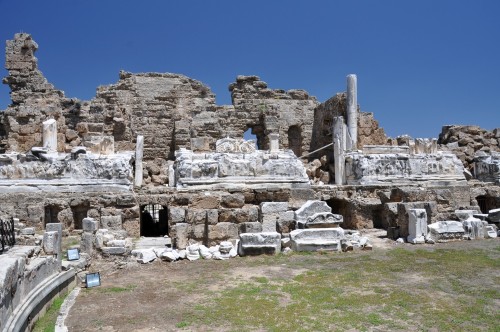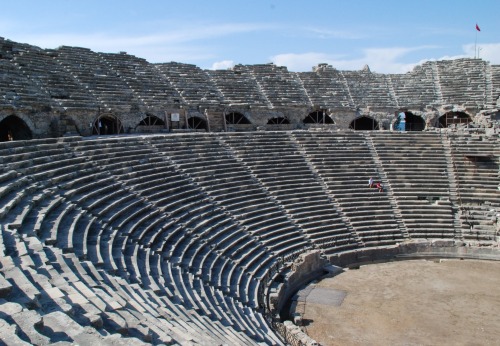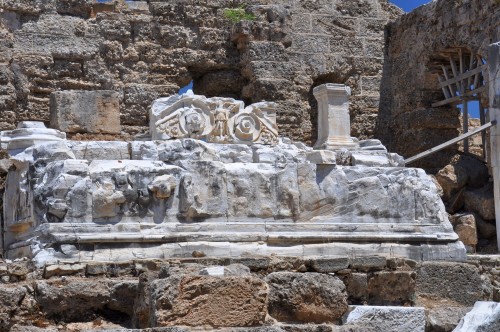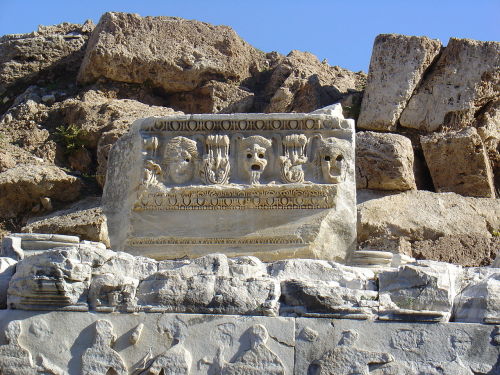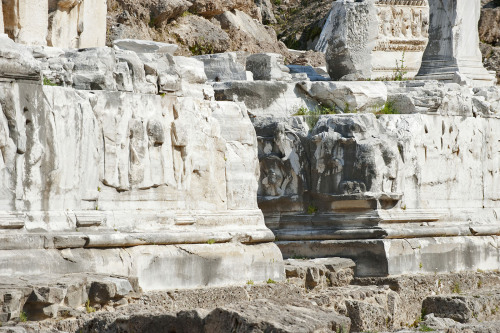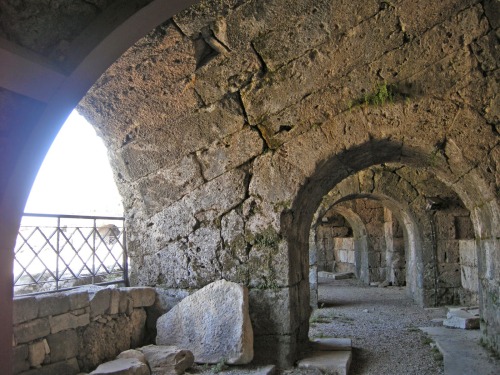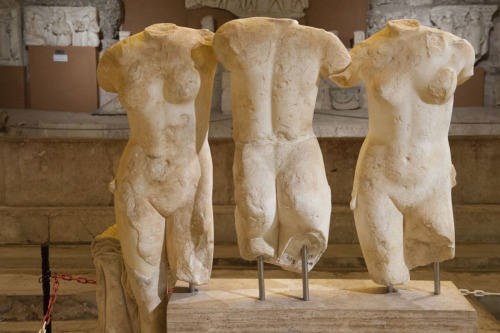classicalmonuments:Theatre of SideSide, Asia minor (Turkey)2nd century CE15,000 spectatorsThe theatr
classicalmonuments:Theatre of SideSide, Asia minor (Turkey)2nd century CE15,000 spectatorsThe theatre was built in the middle of the 2nd century CE, on the site of an earlier, Hellenistic, theater. It represents the Roman type of theaters, because it was built on the foundations supported by the barrel vaults. However, the influence of Greek architecture is also visible, for instance in the shape of the audience which is a sector of a circle greater than 180 degrees. The outer façade of the theater was once two-storied, but only its lower part, decorated with arcades, is now visible.The stage of this theatre consisted of a building called skene and a podium (proskeon) where the spectacles were organized. The skene building, 63 meters (206 feet) long, had three stories that formed an ornamental façade, decorated with columns, niches, statues and reliefs.There were nine interconnected rooms on the lowest level of skene. The traces of the stairs leading to the upper floors have been discovered in two of them. Additionally, three corridors provided the entrance to the skene building directly from the agora, situated next to the theatre. The actors got to the podium through five gates.The podium was 6 meters (20 feet) wide and it was 3 meters (10 feet) above the semi-circular orchestra, located between the stage and the audience. The base of the podium, visible above the orchestra, was decorated with reliefs depicting various scenes from Greek mythology. Unfortunately, the state of the reliefs preservation is very poor.The theater in Side could accommodate up to 15 thousand people. The audience is divided into two parts, by a horizontal passage called diazoma. In the lower part there are 22 rows of seats, separated into 11 sectors. In the upper part there were originally 29 rows of seats, but the highest of them have not been preserved to the present times.When, in the late Roman Empire times, gladiatorial combats and shows with wild animals became more popular, the theater was modified to better suit the needs of these forms of entertainment. A thick wall, separating the audience from the orchestra, was added. This wall not only protected spectators against accidents, but also enabled filling the orchestra with water and organizing the scenes of sea battles.Last picture: A statue group of the three graces found at the theatre.Sources: 1, 2, 3, 4 -- source link
